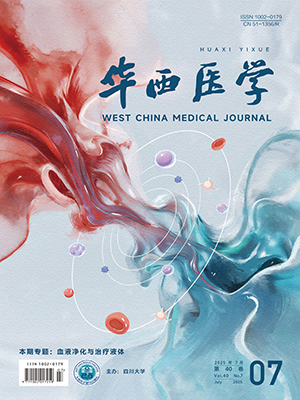| 1. |
李停, 宋建东. 经皮球囊扩张椎体后凸成形术治疗骨质疏松性椎体压缩性骨折骨水泥渗漏的预防. 武汉大学学报: 医学版, 2014, 35(2): 314-317.
|
| 2. |
Huskisson EC. Measurement of pain. Lancet, 1974, 2(7889): 1127-1131.
|
| 3. |
Fairbank JC, Couper J, Davies JB, et al. The Oswestry low back pain disability questionnaire. Physiotherapy, 1980, 66(8): 271-273.
|
| 4. |
Young WF, Brown D, Kendler A, et al. Delayed post-traumatic osteonecrosis of a vertebral body (Kummell’s disease). Acta Orthop Belg, 2002, 68(1): 13-19.
|
| 5. |
Konstantinou D, Velissaris D, Panagiotopoulos E. Kümmell’s disease: is ischemic necrosis or vertebral " microcracking” the first step in the sequence?. Med Hypotheses, 2013, 80(4): 505.
|
| 6. |
Fabbriciani G, Pirro M, Floridi P. Osteoanabolic therapy: a non-surgical option of treatment for Kümmell’s disease?. Rheumatol Int, 2012, 32(5): 1371-1374.
|
| 7. |
Kim DY, Lee SH, Jang JS, et al. Intravertebral vacuum phenomenon in osteoporotic compression fracture: report of 67 cases with quantitative evaluation of Intravertbral instability. J Neurosurg, 2004, 100(1 Suppl Spine): 24-31.
|
| 8. |
Benedek TG, Nicholas JJ. Delayed traumatic vertebral body compression fracture, part Ⅱ: pathologic features. Semin Arthritis Rheum, 1981, 10(4): 271-277.
|
| 9. |
Prabhu LV, Saralaya VV, Pai MM, et al. Vertebral body Integrity: a review of various anatomical factors Involved in the lumbar region. Osteoporos Int, 2007, 70(4): 891-903.
|
| 10. |
Theodorou DJ. The intravertebral vacuum clfeft sign. Radiology, 2001, 221(3): 787-788.
|
| 11. |
Yoon ST, Qureshi AA, Heller JG, et al. Kyphoplasty for salvage of a failed vertebroplasty in osteoporotic vertebral compression fractures: case report and surgical technique. J Spinal Disord Tech, 2005, 18 Suppl: S129-S134.
|
| 12. |
何蔚, 青祖宏, 高巍. 球囊椎体后凸成形术与 Sky 膨胀式椎体成形术治疗椎体压缩性骨折的 Meta 分析. 解放军医学杂志, 2013, 38(4): 324-328.
|
| 13. |
Wu MH, Huang TJ, Cheng CC, et al. Role of the supine lateral radiograph of the spine in vertebroplasty for osteoporotic vertebral compression fracture: a prospective study. BMC Musculoskelet Disord, 2010, 19(11): 164.
|
| 14. |
Kim YJ, Lee JW, Kim KJ, et al. Percutaneous vertebroplasty for intravertebral cleft: analysis of therapeutic effects and outcome predictors. Skeletal Radiol, 2010, 39(8): 757-766.
|
| 15. |
Peh WC, Gelbart MS, Gilula LA, et al. Percutaneous vertebroplasty: treatment of painful vertebral compression fractures with intraosseous vacuumphenomena. AJR Am J Roentgenol, 2003, 180(5): 1411-1417.
|
| 16. |
Schofer MD, Efe T, Timmesfeld N, et al. Comparison of Kyphoplasty and vertebroplasty in the treatment of fresh vertebral compression fractures. Arch Orthop Trauma Surg, 2009, 129(10): 1391-1399.
|
| 17. |
Jung JY, Lee MH, Ahn JM. Leakage of polymethylmethacrylate in percutaneous vertebroplasty: comparison of osteoporotic vertebral compression fractures with and without an intravertebral vacuum cleft. J Comput Assist tomogr, 2006, 30(3): 501.
|
| 18. |
吴承钧, 童培建, 厉驹, 等. 经皮球囊扩张椎体后凸成形术治疗骨质疏松性椎体压缩骨折近期疗效分析. 中国中医骨伤科杂志, 2011, 19(2): 10-15.
|
| 19. |
王成, 尹绍猛, 伞有利, 等. 定向球囊技术在经皮椎体后凸成形术中的应用. 中国骨与关节损伤杂志, 2016, 31(3): 303-305.
|
| 20. |
刘滔, 张志明, 史金辉, 等. 骨水泥温度梯度灌注技术在经皮椎体后凸成形术中的应用. 中国脊柱脊髓杂志, 2015, 25(12): 1073-1078.
|




